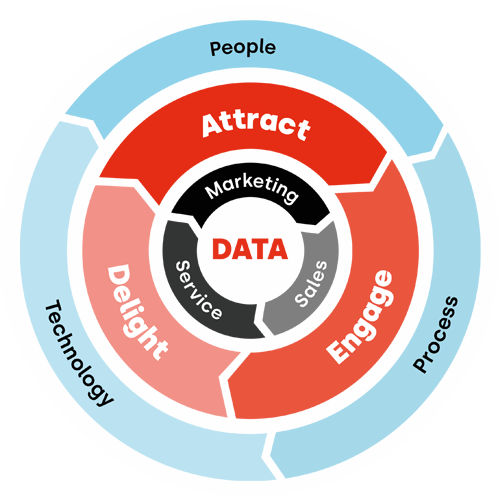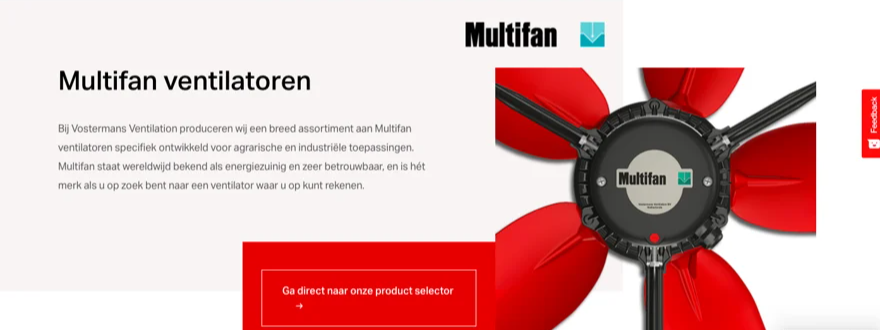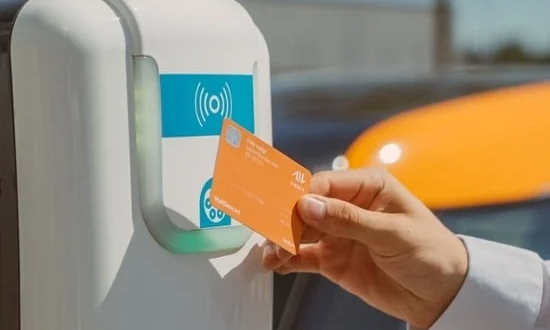Inbound marketing: marketing without advertising | Webs
Sales pitches have had their day. We are less sensitive to advertisements and prefer to look for a solution to our problem ourselves. Inbound marketing is a strategy that responds perfectly to this because it is based on a pull rather than push approach. In this article you will learn how inbound marketing works and what the main advantages are over outbound marketing. You will also read more about the tools you can use to increase the results from your inbound marketing activities.
Content
- What is inbound marketing?
- The phases of inbound marketing
- Buyer persona and customer journey
- What is inbound marketing used for?
- Content marketing vs. inbound marketing
- Difference with traditional outbound marketing
- The benefits of inbound marketing
- Inbound marketing software for more results
What is inbound marketing?
Inbound marketing is a strategy where you focus on a long-term relationship with potential customers. You do this not by sending a sales message (outbound, also called push approach), but by offering added value in the form of content. The result is that customers come to you, rather than the other way around. And that is exactly why we call it "inbound marketing," or a pull approach.
Your website plays a key role in your inbound strategy, this is the place where potential customers can go during their buying journey. At least, if you manage to make your website the go-to resource for all your target audience's challenges. Therefore, the content does not focus on your organization or product, but rather on the customer and her needs.
Of course, the ultimate goal is to make the website pay off. Only there is a time for everything. The strategy of inbound marketing is to take visitors by the hand, gain their trust. Then to convert them into leads and satisfied customers. You can clearly see this in the phasing used in inbound marketing.
The phases of inbound marketing
Inbound marketing has taken off in recent years. Google the term and you'll see a multitude of models. Some models use more phases than others, but in basic terms, inbound marketing can always be traced back to 3 phases:
Phase1. Attract: In this phase, you attract visitors to your website, the hub of your inbound marketing. You attract this traffic to your website by offering valuable content that meets the information needs of your target audience. For example, articles, a checklist or a white paper. Your target audience finds this content through search engines or social media. Once on your site, you can start building a relationship with them. There are several software tools that can help you do this, more on that later.
Phase2. Convert: In this phase, you turn visitors into leads. You entice your visitors with so-called "call-to-actions" to leave their contact information in exchange for valuable content. This could be an ebook, a calculator or a scan.
Phase3. Close: In this phase, you intensify contact with visitors who have already left their contact information. This is also called lead nurturing. You delve more deeply into the customer's questions and challenges so you can provide more targeted value. With this, you help your contact find a good solution, and bring the lead closer to the purchase decision, so to speak.
Sometimes an additional step is added to this model: delight. This is about exceeding expectations. The idea behind this is that satisfied customers stay and often even buy more or become ambassadors of your brand.
If you look closely at these phases, you may recognize other important marketing concepts in these phases. The phase model is broadly similar to the marketing funnel. In addition, you use the principle of the customer's buying journey to structure your marketing efforts. The continuation of inbound marketing is also called inbound sales. It is common for customers to request an appointment with an account manager themselves. Inbound sales works differently than a "traditional" sales process where the initiative is taken by your sales department, also called the traditional push approach.
Buyer persona and customer journey
The principle of inbound marketing is not complicated, but it depends on good preparation. It is essential to get to know your customer well and where his or her needs lie. The buyer persona is a way to empathize with your target audience and create profiles of your decision makers and influencers. You do this by mapping their background, goals, challenges and pain points. This allows you to write targeted valuable content for your customers. Among the questions you answer here are:
- What are my future customer's pain points (that I can solve)?
- What information does my (future) customer need?
- How does he or she behave (online), through which channels?
- How does he or she make (purchase) decisions?
- When does he or she make (purchase) decisions?
- What motivates someone to choose our product?
In the customer journey, or purchase journey of the customer, go one step further and see how ideal customers arrive at a purchase decision. Most companies use multiple buyer personas, each with its own customer journey.
What is inbound marketing used for?
The Internet has revolutionized the way we make purchases. Nowadays we look for answers ourselves. Online. Only when we have done extensive research, we contact you for a closer look. By then, more than half of the purchase journey is already over (57%). The goal of inbound marketing is to help leads get to this point through lead nurturing, or "warming" leads. Inbound marketing also provides better alignment of marketing and sales.
Content marketing vs. inbound marketing
Inbound marketing and content marketing are often mentioned in the same breath. And that is not surprising, because both methods are aimed at helping visitors with the questions the customer has at that moment.
Yet there are also differences. Inbound marketing makes every effort to convert the visitor into a lead. You do this by actively offering relevant content to your customers at the right time. Email marketing often plays a crucial role in this process.
Content marketing is more focused on establishing yourself as an authority in your domain. This sometimes includes content forms that are more difficult to convert, such as podcasts.
The difference with traditional outbound marketing
Opposed to inbound marketing is outbound marketing. Outbound marketing is also seen as a traditional form of marketing. Here you focus mainly on broadcasting your marketing story, for example in the form of telemarketing, advertisements and direct mailing.
The effect of outbound marketing has been declining for years. We are being bombarded with more and more advertisements and are becoming 'immune' to them, so to speak. Adblockers are on the rise, people consciously choose to ignore ads and register in do-not-call registers. There is also a fragmentation of the media landscape going on, which means that there are more and more channels and, as a result, it has long since ceased to be self-evident to reach your target audience.
Another difference between inbound and outbound marketing is that the results of outbound marketing are not always sustainable. The moment an advertising campaign stops, the effect also ebbs away. Much of the content for inbound marketing produces long-term results, for example, because the pages are found permanently through search engines. By the way, this does not mean that outbound marketing methods have no place at all in the arsenal of the modern marketer. Depending on the objective, a targeted ad in the search engine, social media or print media can still be a good choice, however here you also see that the approach is often to help the target group, rather than to sell a product.
The benefits of inbound marketing
Why are more and more companies choosing an inbound strategy? Common arguments are:
- Higher ROI: Companies that invest in inbound marketing typically succeed in increasing their ROI. One major reason is that the cost of inbound marketing cannot be compared to other forms of (broadcast) media. The second reason is that conversion rates are higher. Methods such as radio and TV commercials, cold calling or print media ads are more difficult to measure and have a lower conversion rate. With inbound marketing, you may reach fewer people, but a much higher percentage of relevant traffic.
- Long-term results: When you stop advertising, you see it immediately in your results. The results you achieve as a result of inbound marketing can be retained longer. A blog post that ranks well in search engines can continue to generate visitors for years. Moreover, you can breathe new life into content by regularly updating it. On the other hand, inbound marketing can require a somewhat longer lead time before you see the first results. It's sometimes called an endurance strategy. For those who are keen on quick results, such as because you want to get rid of old inventory, outbound marketing may be a better strategy.
- Better reputation: Because you focus very much on customer questions with inbound marketing, you build a good reputation. By sharing relevant information, you show that you are knowledgeable. You help the potential customers further in their search and this builds trust. In some industries, such as consulting, the success of your company hinges on your reputation.
- Measurability: The results of inbound marketing are often very measurable. This is because almost everything takes place online. With an advertising campaign on TV or in a trade magazine, it is sometimes a guess as to what results can be attributed to this campaign.
Inbound marketing software for more results
Inbound marketing focuses on the online landscape. Good software is a requirement to get results from inbound marketing. Software applications that are commonly used are:
- A content management system (CMS): A CMS is software in which you develop a website. Important about a CMS for inbound marketing is that you can easily measure visitor data, so you can assess whether your website is doing what it should be doing and further optimize it.
- Email marketing software: Email marketing is crucial in the process of lead nurturing. Emails allow you to constantly provide your leads with relevant content. A must for email marketing software is that you can personalize the emails. For example, you don't want to send a lead articles that they have already read for a long time.
- Customer relationship manager software (CRM): What is CRM? A CRM contains information about the customers and all the interactions there have been with the customer. The CRM is especially important in the final stage of the buying process, because from that point on, sales is involved in the sales process. They need to be able to easily look up what has already been discussed with the customer and what they already know.
HubSpot is a platform that integrates these three components. It is designed as an inbound marketing tool. Because you have a HubSpot CRM, CMS and email marketing program in one, all the components work together effortlessly. So you know exactly which blogs have been read by your leads and you can easily follow up with personalized emails.

Want to get the most out of HubSpot? Subscribe to our newsletter, follow us on LinkedIn, or attend our HubSpot User Days!
Explore HubSpot User DaysShare this
You May Also Like
These Related Stories

From sales funnel to modern marketing flywheel: switch?

Website development: from online business card > marketing machine


